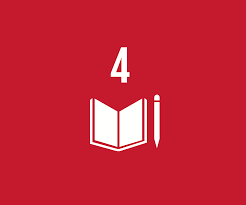|
Snapshot of status of education in Bihar
Sustainable Development Goals (SDG) #4-Quality Education is one of the most important SDGs to ensure that ‘no one is left behind’. The 17 SDGs were adopted by the United Nations in 2015 and countries are to achieve them by 2030. As a signatory, India is committed to inclusive and quality education to all students by 2030. India’s education system is the third largest in the world in terms of students, next to United States and China[1]. Still, India harbours 46% of world’s illiterates.[2] Bihar is the third largest state of India by population and as per 2011 Census, the median age of population in Bihar is 20 years,[3] meaning that there is high young population in the state. But on the flip-side, the drop-out rates in secondary (grades 8-10th) and higher secondary (11th to 12th) levels are as high as 65.18% and 66.98% respectively in the state.[4] Bihar is also a state facing gender inequality. Among young (10–24 years), 82% males and 71% females were literate in 2011 compared to 91% and 85%, respectively, in India.[5] An important contributor is the interplay of marriage of girls at an early age, which leads to asymmetries between boys and girls in educational attainment. Women aged 20-24 years married before age 18 is still about 40.8% in Bihar (National Family Health Survey-5, 2019-2020). The front-runners of access to education The State has taken steps to address gender disparity in education. One of the most well-known schemes is the Mukhyamantri Balika Cycle Yojana for girls, under which free bicycles are given to girls for easy mobility. Another is the Kasturba Gandhi Balika Vidyalaya or schools set up for girls from minority communities. The focus is not only on conditional cash transfers but also on facilitating access to schools. Overall, these schemes achieve retention in schools, but there is a great need for learning concepts, especially for students in X and XII. Why Turn the Bus education application is important TTB aims universal coverage of students and provides them access to school course curriculum through ‘world class’ technology platform. TTB believes in power of community and is actively engaging Jeevika (Self-Help Group in Bihar supported by World Bank) to spread the message of need and parity in education and making the TTB educational app reach all homes. It is a powerful tool ready to scale and will soon reach lakhs of young students. By improving quality learning, TTB is significantly contributing to expanding the impact on SDG-4. [1] Higher Education in India: Challenges and opportunities, Journal of Education and Practice, 2017 [2] The Progress of School Education in India, Oxford Review of Economic Policy, 2007 [3] Uttar Pradesh and Bihar have India’s youngest population, The Business Standard, 2016 [4] Journal of educational planning and administration, National University of Educational Planning and Administration, 2015 [5] School quality and its association with agency and academic achievements in girls and boys in secondary schools: Evidence from Bihar, India, International Journal of Educational Development, 2015
0 Comments
Leave a Reply. |
Archives
March 2024
Categories |
21213 SE 42nd Pl.
Issaquah WA 98029
Issaquah WA 98029
Turn the Bus is a registered 501 (c) (3) US nonprofit organization.
© Turn the Bus. All rights reserved.
© Turn the Bus. All rights reserved.


 RSS Feed
RSS Feed
